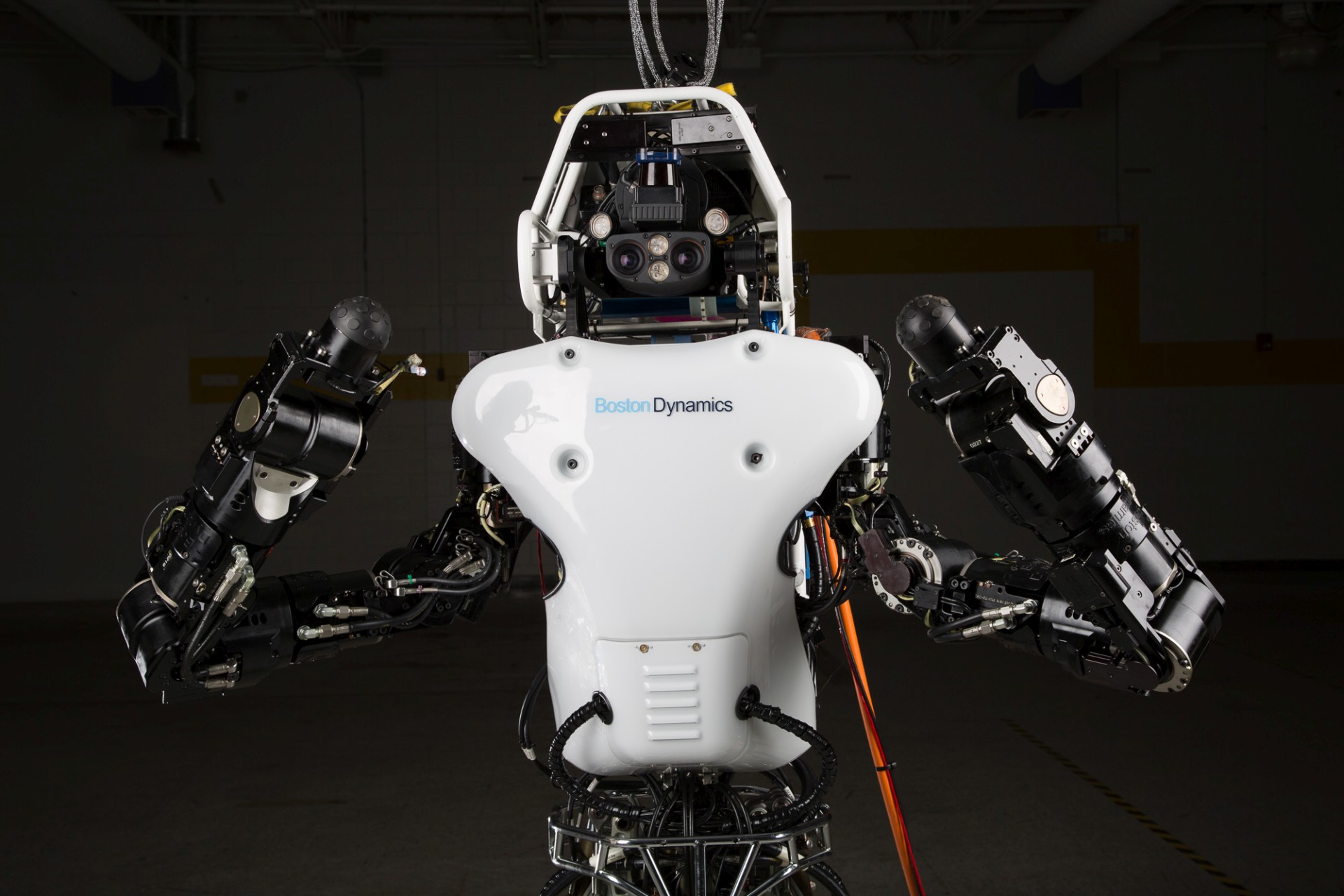A total of $3.5 million in prizes will now be awarded to the top three finishers in the DARPA Robotics Challenge (DRC), the final event of which will be held June 5-6, 2015, at Fairplex in Pomona, Calif.
The new prize structure was created in recognition of both the significant progress already demonstrated by teams toward development of human-supervised robot technology for disaster response and the increased number of teams planning to compete in the Finals, including those funded by the European Union and the governments of Japan and South Korea.
Aside from the previously announced $2 million grand prize, DARPA plans to award $1 million to the runner-up and $500,000 to the third-place team. DARPA expects at least twenty teams to compete in the DRC Finals.
“During periodic reviews with the DRC teams we’re already seeing them perform at a much higher level than they were last year. We’re excited to see how much further they can push the technology,” said Gill Pratt, program manager for the DRC. “As any team will tell you, we’re not making it easy. DARPA has been consulting with our international partners to decide on what steps we need to take to speed the development of disaster-response robots, and the DRC Finals will reflect those realities.”
The competing teams have been operating under extreme pressure since the 2013 DRC Trials, working to upgrade their robots and software for the more demanding DRC Finals. In June 2014, DARPA announced a series of additional hurdles that teams will face in the Finals:
Robots will have to operate completely without wires—they may not be connected to power cords, fall arrestors, or wired communications tethers. Teams will have to communicate with their robots over a secure wireless network.
Teams are not allowed any physical intervention with their robot after it begins a run. If a robot falls or gets stuck, it will have to recover and continue with the tasks without any hands-on assistance. If a robot cannot sustain and recover from a fall, its run will end.
DARPA will intentionally degrade communications between the robots and human operators working at a distance. The idea is to replicate the conditions these robots would face going into a disaster zone. Spotty communication will force the robots to make some progress on their own during communications blackouts.
The teams using the DARPA-developed Atlas robot got their first look at the newly upgraded system during a technical shakeout the week of January 12th in Waltham, Mass. The upgraded Atlas is 75 percent new—only the lower legs and feet were carried over from the original design. Lighter materials allowed for inclusion of a battery and a new pump system with only a modest increase in overall weight; the upgraded robot is 6-foot-2 (1.88 meters) and weighs 345 pounds (156.5 kilograms).
The most significant changes are to the robot’s power supply and pump. Atlas will now carry an onboard 3.7-kilowatt-hour lithium-ion battery pack, with the potential for one hour of “mixed mission” operation that includes walking, standing, use of tools, and other movements. This will drive a new variable-pressure pump that allows for more efficient operation.
“The introduction of a battery and variable-pressure pump into Atlas poses a strategic challenge for teams,” said Pratt. “The operator will be able to run the robot on a mid-pressure setting for most operations to save power, and then apply bursts of maximum pressure when additional force is needed. The teams are going to have to game out the right balance of force and battery life to complete the course.”
Other major upgrades to Atlas focused on increasing efficiency, dexterity, and resilience, and include:
- Repositioned shoulders and arms allow for increased workspace in front of the robot and let the robot view its hands in motion, thus providing additional sensor feedback to the operator.
- New electrically actuated lower arms will increase strength and dexterity and improve force sensing.
- The addition of an extra degree of freedom in the wrist means the robot will be able to turn a door handle simply by rotating its wrist as opposed to moving its entire arm.
- Three onboard perception computers are used for perception and task planning, and a wireless router in the head enables untethered communication.
- Re-sized actuators in the hip, knee, and back give the robot greater strength.
- A wireless emergency stop allows for safe operation.
- As a result of the new pump, Atlas is much, much quieter than before
The seven DRC teams using Atlas are scheduled to receive their upgraded robots by the end of January. The robots will be delivered with a “battery emulator,” a training tool temporarily mounted in the robot that simulates how the real battery will perform. This will allow them to switch modes between constant voltage for routine practice and metered voltage to simulate actual battery life.
Given their identical hardware, the Atlas teams will have to differentiate themselves through software, control interfaces, and competition strategy. Teams will have a few options on the selection of tasks they choose to attempt and the order they do them—and must manage time and battery life during their runs—but DARPA expects that the top-placing teams will complete all of the tasks.
Teams are likely to keep their robots connected to fall arrestors during much of the remaining months of training as a safeguard against premature damage to the robot. DARPA demonstrated the new Atlas with a fall arrestor in place.
“Risk mitigation is part of the game,” Pratt said. “It’s up to the teams to decide what chances they’re willing to take during training and risk falls and damage, but come the DRC Finals, the cords are cut.”
New teams interested in competing in the DRC have until February 2, 2015, to register and submit qualification materials. DARPA will announce the roster of qualified teams in early March.










